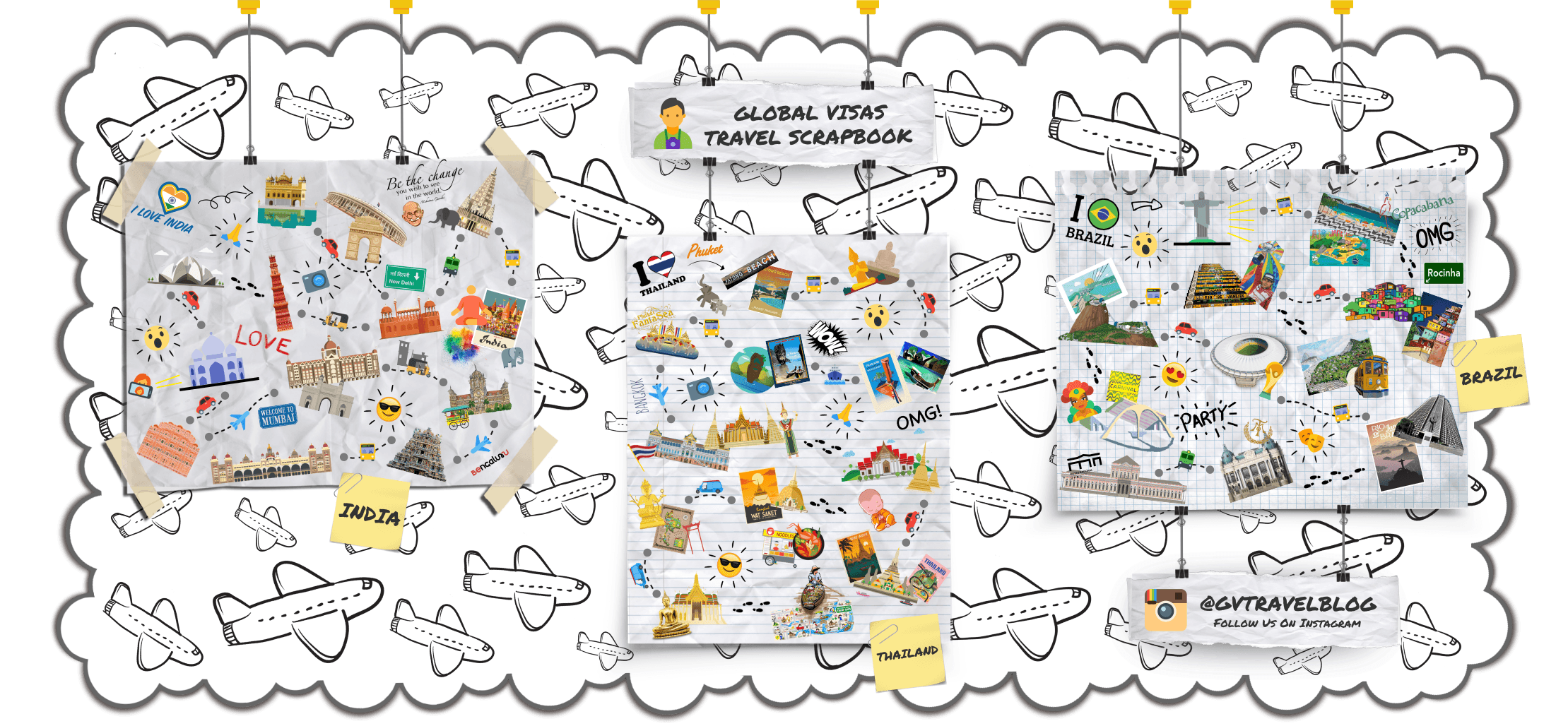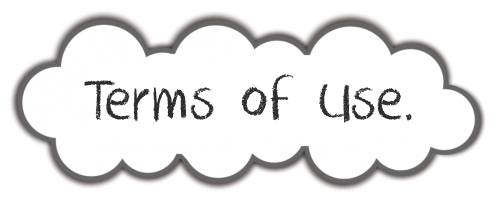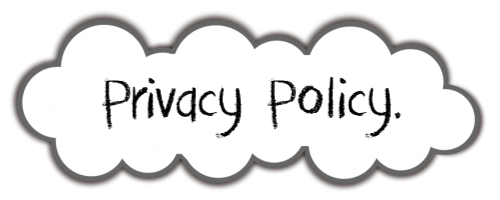BY PLANE:
China is a huge country so, unless you’re not planning on venturing outside the eastern seaboard, definitely consider domestic flights. China has many domestic flights connecting all the major cities and tourist destinations. Airlines include the three state-owned international carriers: Air China, China Southern, and China Eastern, as well as regional ones including Hainan Airlines, Shenzhen Airlines, Sichuan Airlines and Shanghai Airlines.
Flights between Hong Kong or Macau and mainland Chinese cities are considered to be international flights and so can be quite expensive. Hence if arriving in, or departing from, Hong Kong or Macau, it is usually much cheaper to fly to or from Shenzhen or Zhuhai, just across the border, or Guangzhou, which is a little further afield but offers flights to more destinations.
Prices for domestic flights are set at standard rates, but discounts are common, especially on the busier routes. Most good hotels, and many hostels, will have a travel ticket service and may be able to save you 15-70% off the price of tickets. Travel agencies and booking offices are plentiful in all Chinese cities and offer similar discounts. Even before considering discounts, travelling by aircraft in China is not expensive.
For travel within China, it is usually best to buy tickets in China, or on Chinese websites (these often have English versions). A useful app/website is CTrip, which is the only way you can use an international credit/debit card on the fly to buy train/plane tickets. If you buy your ticket from a Chinese vendor they will contact you to let you know about changes to your flight. If you purchased your ticket overseas, be certain to check on the flight status a day or two before you plan to fly. Booking too far in advance on Chinese websites is not advisable as prices tend to remain high until two months before the flight date, at which point large discounts are usually seen unless a particular flight has been heavily booked far in advance.
Matches and lighters are not permitted on flights in China, even in carry-on luggage. Pocketknives must be placed in checked luggage.
Be prepared for unexplained flight delays as these are common despite pressure from both the government and consumers. For short distances, consider other, seemingly slower options. Flight cancellations are also not uncommon. If you buy your ticket from a Chinese vendor they will likely try to contact you (if you left contact information) to let you know about the change in flight plan. If you purchased your ticket overseas, be certain to check on the flight status a day or two before you plan to fly.
Also be sure not to lose your checked baggage receipts, as they will be checked against your baggage tags before you are allowed to leave the baggage claim hall.
BY TRAIN:
Train travel is the main method of long-distance transportation for the Chinese, with an extensive network of routes covering most of the country. Roughly a quarter of the world’s total rail traffic is in China.
China now has the world’s largest network of high-speed railways (similar to French TGV or Japanese Shinkansen bullet trains) called CRH. If your route and budget allow then these may be the best way to get around. CRH trains are top-notch, even internationally, in terms of equipment and cleanliness.
On most higher-level trains recorded announcements are made in Chinese, English. Local trains will have no announcements in English, so knowing when to get off can be harder. Be careful with your valuables while on the train; theft on public transportation has risen. Motion sickness pills and ear plugs are recommended.
Long distance trains will have a buffet or dining car, which serves mediocre hot food at around ¥25. The menu will be entirely in Chinese. There are normally vendors on station platform who will sell noodles, snacks, and fruit at better prices. Most train cars have a hot boiled water dispenser available so you can bring tea, soups and instant noodles.
Smoking is not permitted in the seating or sleeping areas but is allowed in the vestibules at the end of each car on older trains. Smoking is banned inside station buildings apart from in designated smoking rooms.
As of 2014, sale of train tickets usually starts 20 days in advance, either online via the China Rail booking site or at the major train stations’ ticket offices. The China Rail site is available only in Chinese and you must have a Chinese bank account to buy tickets, so you can only use it if you have a Chinese friend but the tickets for you. Especially around festivals, tickets sell out quickly, so book tickets as far in advance as possible.
- CTrip. A Chinese travel site with an English version and English mobile app which allows you to view timetables, book conventional and high-speed trains from 20 days to 30 minutes before departure. A purchase voucher for the train ticket will be sent to the app 2 hours after purchase. Show this to the station staff at the ticket desk with your passport to collect the train ticket. (updated Apr 2017)
- Absolute China Tours or China Highlights have English time and fare information (while extremely useful, these sites’ lists are not 100% complete)
- OK Travel has more schedules. This site is mostly in Chinese, but includes romanized place names and you can use it without knowing Chinese.
Two days later, tickets can be bought at private agencies, which are small ticket window shops scattered around cities, labeled “售火车票” (shou huo che piao). They charge a small commission (e.g. ¥5) but can save you a trip to the train station.
Travel agencies will “sell” tickets in advance, but no one can guarantee your ticket until the station releases them onto the market, at which point your agency will go and buy the ticket they had sold you. This is true everywhere in China.
If you go to a station to buy tickets, have your train number, date and time of departure, seating class, number of tickets, origin and destination cities all written down in Chinese, or at least in Pinyin. Staff will not generally speak English, and at the train stations there are usually long queues. You must present ID (e.g., passport). Each traveller must be present, with ID, to pick-up their ticket.
It is illegal to buy second-hand tickets so don’t buy “discount” tickets that you may be offered at the train station.
Chinese train stations function like an airport, so do not count on catching a train on the last minute: gates close a few minutes prior to departure! To be safe, be there at least 20 minutes early, or 30 minutes if you are entering a big train station. Make sure you’re waiting in the right place, because often the train will only stop for a couple of minutes.
Many cities have different stations for normal trains and high-speed trains. High speed station names usually consist of the city name and the cardinal direction (for example Héngyángdōng, “Hengyang East”)
BY BUS:
Travelling by public city buses (公共汽车 gōnggòngqìchē) or long-distance buses (长途汽车 chángtúqìchē) is inexpensive and ideal for in-city and short-distance transportation.
City buses vary from city to city. However, if you can understand the bus routes then they are cheap and go almost everywhere. Buses will normally have recorded announcements telling you the next stop – examples of which might include ‘xià yí zhàn – zhōng shān lù’ (next stop Zhongshan Road) or ‘Shànghǎi nán huǒ chē zhàn dào le’ (Shanghai South railway station – now arriving). Some major cities such as Beijing or Hangzhou will have English announcements, at least on some major routes. Fares are usually about ¥1-3 or more if travelling into the suburbs. Most buses simply have a metal cash-box next to the entrance where you can insert your fare (no change – save up those 1 yuan coins) or on longer routes a conductor that will collect fares and issue tickets and change. The driver usually prioritises speed over comfort so hold on tight.
Coaches, or long-distance buses, may be more practical than trains for going to suburbs or smaller cities. Coaches originating from larger cities on the east coast tend to be air conditioned with soft seats. Bus personnel tend to try to be helpful, but they are much less familiar with foreigners than airline personnel.
A coach or bus in rural China is a different experience. Signs in the station to identify buses will be in Chinese. The coach’s license plate number is printed on the ticket, it will be spray-painted on the back of the bus. Scheduled times of departure and arrival are only rough estimates, with the bus leaving when it’s full, rather than at a scheduled time. Often, rural coaches are the only forms of transportation in many areas of China and are usually more than willing to stop anywhere along the route should you wish to visit more remote areas without direct transport. Buses can also be flagged down at most points along their route. The ticket price the rest of the way is negotiable.
Getting a ticket is straightforward. Large bus stations have ticket counters who sell printed tickets displaying the departure time, boarding gate and license plate number of your bus. You need your passport to purchase a ticket, and often you will need to go through security inspection.
BY SUBWAY:
Most major cities in China now have subway/metro (地铁 dìtiě) systems. They are typically modern, clean, efficient, popular with the locals and are still rapidly expanding. Beijing, Shanghai and Guangzhou already have some of the world’s most extensive systems. Subways are usually the best way of getting between two points. In rush hour they will be extremely crowded, but the roads will be heavily congested at the same time.
On both station platforms and in trains there is usually signage in both Chinese and English listing all stations on that particular line. Announcements in the stations and trains are made in Mandarin and English, and sometimes the local language. Given the rapid rate of change over the past years, many maps (especially English versions) may be out of date. It is worth obtaining a bilingual subway network map in advance and carrying it with you whilst traveling by subway.
Chinese subway stations often have a security checkpoint before the turnstiles, where you must run your bags through an X-ray scanner.
Stations tend to have numerous exits with labels such as Exit A, B, C1, or C2. On maps you will find each exit is labeled clearly around the station. Signs in the station itself make it easy to find your exit.
If there are available seats, be prepared for a mad dash as commuters shove and wrestle for the available seats. Pickpockets are also most likely to strike at this moment, so pay attention to your belongings.
BY TAXI:
Taxis (出租车 chūzūchē or 的士 dīshì, pronounced “deg-see” in Cantonese-speaking areas) are generally common, and reasonably priced. Flagfalls range from ¥5 in some cities to ¥14 in others, with a per km charge around ¥2-3. In most situations, you can expect between ¥10-50 for an ordinary trip within the city. There is no extra charge for luggage, but in many cities rates are a bit higher at night. (For example, in Shanghai flag fall costs ¥14 06:00-22:59, and ¥18 23:00-05:59) Tips are not expected.
While it is not unheard of for drivers to cheat visitors by deliberately selecting a longer route, it is not that common, and usually shouldn’t be a nuisance. When it does happen, the fare difference will usually be minimal. Should you feel you have been seriously cheated on the way to your hotel, and you are staying at a mid- or high-range hotel that has a doorman, you can appeal to him and/or the desk staff for assistance. In cities, photographing the driver’s ID (posted on the dashboard) and threatening to report him to the authorities can be quite effective.
It is common for people to order and even bid higher fares for taxi journeys via a phone app. These services make it harder to casually hail a taxi on the street, so learning how to use app might be a good idea if you will spend significant time here. While most apps are available only in Chinese, the largest one, Didi Chuxing, is available in English.
Beware of taxi hawkers who stalk naive travellers inside or just outside the airport terminals and train stations. They will try to negotiate a set price to bring you to your destination and will usually charge 2x or 3x more than a metered fare. If you’re not familiar with the area then stick with the designated taxi areas that are outside most major airport terminals and insist that the driver use the meter. The fare should be plainly marked outside the taxi.
Finding a taxi during peak hours can be a bit hard. But it really gets tough if it is raining. Away from peak hours, especially at night, it is sometimes possible to get a 10% to 20% discount especially if you negotiate it in advance, even if with the meter on and asking for a receipt. Tipping is not required, although they will certainly not complain if you round up after a long journey.
Taxi fee is usually rounded (half up) to integer. So pay ¥14 when the value on the meter ranges from 13.5 to 14.4, for example.
Sitting in the front passenger seat of taxis is acceptable and actually useful if you have trouble communicating in Chinese. Some taxis mount the taxi meter down by the gearbox, where you can only see it from the front seat. Be warned that drivers may start smoking without asking by just opening their window and lighting up. In some cities it is also common for drivers to try and pick up multiple passengers if their destinations are in the same general direction. Each passenger pays full fare but it saves the time of waiting for an empty cab at rush hour.
Even in major cities like Shanghai or Beijing, you are very unlikely to find an English-speaking taxi driver, and anywhere else even less so. If you are not able to pronounce Mandarin well then you can be easily misunderstood. Therefore it is advisable to keep a written note of the name of place where you want to go or carry a map. Using romanized spelling (Pinyin) is ineffective since most Chinese can’t understand it, and the same pinyin can correspond to many different characters, so it is always better to get someone to write it down in Chinese characters for you. Business cards for your hotel and for restaurants are useful to show taxi drivers. In major cities in the prosperous southern and eastern coastal provinces, many taxi drivers are migrants from other parts of China who speak Mandarin but not the local dialect.
In some cities, taxi companies use a star-rating system for drivers, ranging from 0 to 5, displayed on the driver’s name-plate, on the dashboard in front of the passenger seat. While no or few stars do not necessarily indicate a bad driver, many stars tend to indicate good knowledge of the city, and willingness to take you to where you ask by the shortest way. Another indicator of the driver’s ability can be found on the same name-plate – the driver’s ID number. A small number tells you he has been around for a long time, and is likely to know the city well. A quick tip to get a taxi driver’s attention if you feel you are being ripped off or cheated: Get out the car and start writing down his license plate number and if you speak some Chinese (or have a good phrasebook) threaten to report the driver to the city or the taxi company. Most drivers are honest and fares are reasonable but there are the bad ones out there who will try to use your lack of Chinese skills to their advantage.
Chinese are sometimes competitive when it comes to finding a taxi. The person who flags down a particular car is not necessarily entitled to that ride. Having locals move farther up in traffic to intercept cars or being shoved out of the way while trying to enter a taxi is common. If there are others in the area competing for rides, be ready to reach your car and enter it as soon as possible after flagging it down. Wear your seat belt at all times (if you can find it).
Some taxi drivers, in particular those who can speak some English, can be quite curious and talkative, especially during peak hours’ traffic (高峰 gāofēng).
BY TRAM:
Above ground, cities like Dalian or Changchun, offer transport via tram. An increasing number of cities, such as Nanjing and Wuhan, are opening new light-rail systems in newly developed urban areas.
Making more frequent stops than subways, trams can offer a practical way of getting around. Single-car trolleys may also be in use. Both modes are susceptible to traffic jams.
BY BICYCLE:
Bicycles (自行车 zìxíngchē) were once the most common form of transportation in China, but many people have upgraded to electric bikes and motorcycles. Bicycle repair shops are frequent apparently anywhere in cities and rural areas.
The fairly new phenomenon of dockless rideshare bikes has dramatically reversed this decline on the streets of China’s larger cities. They operate on a grab’n’go basis: you use your mobile phone to unlock any free bike, pay ¥1-2 per 30 minutes while using them, and drop them off pretty much anywhere you like. The largest operators Mobike (orange) and Ofo (canary yellow) have English apps. Dockless bikes are built to last, meaning they’re heavy, clunky and ungeared, but for travellers, they can be a cheap, convenient means of transport that is better than trying to deal with public transport for hours on end.
There are two major dangers for cyclists in China:
- Motor traffic; cars and motorcycles frequently pull out without any warning, and in most areas red lights are apparently optional.
- Bicycle theft is rampant throughout cities in China.
China is a vast country and it provides serious cyclists with challenges to bike across mountains and desert. If you plan to cycle through China, get a visa before your journey, as it can be hard to get one along the way. Avoid saying that the journey will be by bike, as embassy personnel may not like that, and Xinjiang and Tibet are politically sensitive. The visa is valid for any border crossing and transport method anyway (except Tibet).
BY CAR:
The PRC generally does not recognize International Driving Permits and does not permit foreigners to drive in China without a Chinese license. Hong Kong and Macau licenses are also considered to be foreign and having one of them will not allow you to drive in the mainland. Importing foreign vehicles is difficult.
Rented cars most often come with a driver and this is probably the best way to travel in China by car. Driving in China is not recommended unless you are used to chaotic driving conditions. Driving in China’s cities is not for the faint-hearted, and parking spaces are often difficult to find. That being said, driving habits have been improving over time, and these days are not as aggressive as in say, Indonesia or Vietnam.
Traffic moves on the right in mainland China. Many neighbors, such as India, Pakistan, Nepal, Bhutan as well as Hong Kong and Macau have traffic that moves on the left.
In the areas that most tourists are likely to visit, road direction signs are bilingual in Chinese and English.
Foreigners should really avoid driving outside of major cities. “One Way” signs usually mean “mostly but not always one way”. Expect someone who misses an exit ramp on a freeway to slow down just before the upcoming entry ramp and make a 270° turn to get back on. Expect drivers to take creative shortcuts in most scenarios.
BY MOTORCYCLE:
Motorcycle taxis are common, especially in smaller cities and rural areas. They are usually cheap and effective but scary. The fares are negotiable.
Regulations for riding a motorcycle vary from city to city. In some cases, 50cc mopeds can be ridden without a driving license although many cities have now banned them or reclassified them due to numerous accidents. Riding a ‘proper’ motorcycle is much harder – partly because you’ll need a Chinese license, partly because they are banned in many cities and partly because production and importing have slowed with the focus on automobiles and electric scooters. The typical Chinese motorcycle is 125cc, can do about 100 km/h and is a traditional cruiser style. They are generally slow, mundane to ride and have little sporting potential. Government restrictions on engine size mean that sports bikes are rare but can still be found. Another popular choice is a 125cc automatic ‘maxi’ scooter based loosely on the Honda CN250 – it’s a bit quicker than a moped and more comfortable over long distances but has the benefit of automatic transmission which makes negotiating stop-start urban traffic much easier.
Most cities will have a motorcycle market of some description and will often sell you a cheap motorcycle often with fake or illegal license plates – although a foreigner on a motorbike is a rare sight and it will grab the police’s attention. Helmets are essential on ‘proper’ bikes but optional on scooters. You must have a license plate – they are yellow or blue on a motorcycle or green on a scooter and can cost several thousand yuan to register the bike yourself. Fake plates are easily available at a lower price, but are risky.
BY PEDICAB (RICKSHAW):
In some mid-sized cities, pedicabs are a much more convenient means of travelling short distances. Sanlunche (三轮车), the Chinese term used both for pedal-powered and motorized rickshaws, are ubiquitous in rural China and lesser developed (which is to say, less touristy) areas of larger cities. Negotiating the fare in advance is a must.
Reports of overcharging probably refer to rip-off artists working tourist destinations, like Silk Alley, Wangfujing, and the Lao She Tea House in Beijing in particular. Perhaps the rule of thumb should be, “Beware of anyone selling anything near tourist traps.”
If you see normal Chinese families using the “sanlun” – for instance, travelling between the Beijing Zoo and the nearest subway stop – then it’s safe. Don’t patronise any sanlun wearing some old fashioned costume to attract tourists. He’ll try to charge you ten times the going rate.
Electrified three-wheeled sanluns developed or converted from the pedicabs seem to be in the majority in Shanghai.









